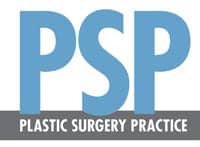Strategies for Making Ends Meet in Your New Location
To the Editor:
While Jay Shorr’s recent practice-management article, “Grand Opening: Is it really time to open an additional location?”, in the March 2014 issue of your magazine, provided readers with thought-provoking questions to consider before deciding to expand their business, it didn’t really address the all-important issue of financing.
Mr Shorr is correct to point out that lack of funding is one of the primary reasons that a new business venture will fail, but there are more options available to physicians than he addressed. For example, the role of patient financing in your business is a critical piece of the financing puzzle. Reimbursement from traditional insurance providers has tightened, leaving only private credit providers to finance patients seeking procedures. If your patients aren’t able to pay, the idea of opening a new location is off the table.
It’s true that “banks are pretty finite in their guidelines with interest and payment terms,” but I would go further to point out that a bank loan is just not an option for a majority of physicians and other small business owners. It is estimated that banks decline approximately 90% of all applications for small business loans. This leaves growing practices relying on their current assets which some leverage for cash.
Patient financing often adds to the financial burden borne by the practice. It’s estimated that approximately 50% of patients who apply through the leaders in the space are declined. This gives doctors only one option if they wish to serve that patient: self-financing. Leveraging this asset may very well be the answer many practitioners are seeking.
In recent years, we have come across a number of practices with $1 to $2 million in patient receivables funded entirely out-of-pocket by physicians. The good news is that the practice is active, strong, and growing. The bad news is the draw on cash, cost of capital, and cash flow challenges created for a practice, which still needs to pay salaries and overhead before ever considering growth into new locations. What may seem like a liability may also prove to be an asset that can be leveraged.
Practitioners can fill the empty chairs in their waiting room without deploying all of their available cash to provide their patients with financing. Companies like ours will purchase portions of doctors’ receivables, giving them the liquidity they need to continue to expand their practices. These purchases of existing portfolios allow the practice to redeploy dollars that would have taken months or years to collect. This is a far better option than a private investor who “may require a large percentage of ownership,” or is waiting for a bank loan that is likely to never happen. Your new partner will be sharing in your profits for years to come, and selling your receivables happens just once, leaving you with no one else to answer to.
David Sederholt
Chief Operating Officer
Strategic Funding Source Inc
New York, NY
To the Editor:
I want to provide further perspective to the article “Grand Opening: Is it really time to open an additional location?” by Jay A. Shorr, which appeared in your March 2014 issue.
The article provides insights on the importance of quality staffing and management at the new facility for doctors considering expansion. It also discusses funding sources to consider, including self-funding, third-party lenders, or the merger or sale of the existing practice. In our experience, another factor critical to success and valuation of the existing practice is cash flow. When optimized, positive cash flow in an existing location can reflect the financial health of the practice and support self-funded expansion.
When patients pay the practice at the time of the procedure or surgery, according to practice policy, the doctor has immediate access to this revenue or cash flow. Alternatively, if the doctor chooses to “be the bank” by extending credit to patients and allowing them to pay the practice monthly, cash flow can be tied up in accounts receivable (A/R) and unavailable as a funding source.
For more than 27 years, doctors have used the CareCredit healthcare credit card to help patients access needed care and enhance their appearance. The practice receives payment within 2 business days with no recourse should the patient delay payment or default. This can result in increased cash flow, reduced A/R, and decreased costs associated with billing and collections. Plus, the practice is no longer acting as a financing company by extending loans to patients, a key consideration as consumer lending requirements become more complex. Most importantly, having more available cash and fewer uncollected procedure fees in A/R can help in determining if the time is right to expand the practice or add a second location.
We hope your readers find this additional information helpful as they consider expanding their services.
Sincerely,
Greg Pierce
Vice President, Sales
CareCredit
Original citation for this article: Letter to the editor. Plastic Surgery Practice. 2014; May 8.




